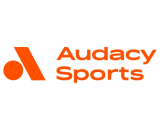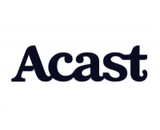
 In the ’70s and previously, our TV viewing time was pretty much divided between NBC, CBS, and ABC, plus maybe a little PBS in some households, plus maybe an independent station for some old syndicated reruns.
In the ’70s and previously, our TV viewing time was pretty much divided between NBC, CBS, and ABC, plus maybe a little PBS in some households, plus maybe an independent station for some old syndicated reruns.
But in the early ’80s, things began to change. Dedicated cable networks started appearing, dedicated to news (CNN), sports (ESPN), weather (The Weather Channel), movies (HBO and Showtime), music videos (MTV), old movies (AMC and TCM), and more.
Then, in the early ’90s, some of those cable networks began adding original comedy and drama series to their schedules with shows that were reasonably close to network quality. (You may vaguely recall “Silk Stalkings” and “La Femme Nikita” on USA Network and “Dream On” on HBO).
By the mid ’90s, we started seeing some original programs on cable networks that were arguably better than the offerings of the major networks (which were now four, with the addition of Fox): “The Larry Sanders Show,” “Oz,” “The Sopranos,” and “The Wire” on HBO, “The Shield” on FX, and so forth.
Since then, the pace has picked up. Now there are well over a dozen cable networks offering flagship original series with arguably better-than-network quality: AMC has “Mad Men,” Showtime has “Homeland,” FX has “Archer” and “Justified.”
As a result, TV is in the midst of an amazing renaissance!
But now, I believe, we’re entering a new phase.
Increasingly, as I’ve written here before, people are watching TV on PCs, smartphones, and tablets. Or they can watch on “smart TVs,” which can be either a feature built into the TV itself (i.e., upgradable software and a WiFi connection), or as simple as the consumer connecting an Xbox or Playstation 3 or a Apple TV ($99) or a Roku ($49) or a Chromecast stick ($35) .
And, for them, the big three networks. (i.e., sources of TV programming) are increasingly Netflix, Hulu Plus, and Amazon Prime.
Each of the three is taking a different approach to its content line-up and its business model:
(1) Netflix allows commercial-free viewing of movies and of TV series as they come out on DVD (or, in some cases, a few months later). At the moment, it’s a straight $7.99 per month for their commercial-free product — one of the best entertainment values in history.
(2) Hulu Plus focuses on current TV shows, adding them shortly after they air and includes most shows for most major networks (except CBS, which is not a part-owner like the others area), and is starting to offer a large handful movies, too. Its business model is a hybrid of subscription and ad-supported — a smaller monthly subscription plus relatively brief commercial pods (typically about one minute long) during shows’ standard commercial breaks.
(3) Amazon Prime Instant Video offers a smaller line-up of movies and shows than either of the other two services (but with some exclusives). But the neat thing about it is that for we loyal Amazon customers (i.e., those of us who pay $79/year for free two-day shipping), it’s a value-added feature — in other words, we perceive it as free. (Plus which, it lacks Hulu Plus’s annoying commercial breaks.)
Continued tomorrow.






